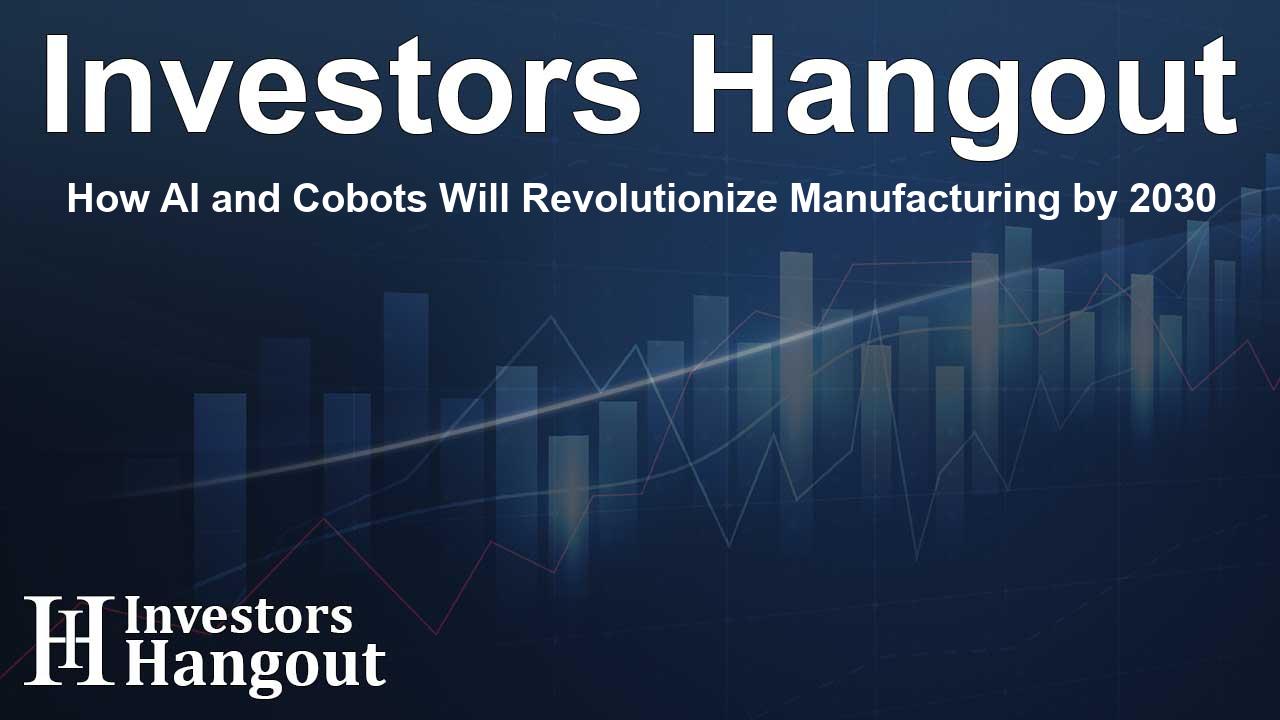How AI and Cobots Will Revolutionize Manufacturing by 2030

The Transformation of Manufacturing Through AI and Cobots
The manufacturing industry is on the brink of a major transformation, driven by the integration of artificial intelligence (AI), digital twins, and collaborative robots (cobots). Experts believe that the AI in manufacturing market will approach USD 46 billion by 2030, showcasing a robust compound annual growth rate (CAGR) of 47%. Meanwhile, the digital twin market is projected to grow to approximately USD 150 billion, with an impressive CAGR of about 60%. As for cobots, their market is expected to reach around USD 12 billion, stepping up significantly at a CAGR of 35% from 2025 to 2030.
Embracing a Human-Centric Manufacturing Future
Today's manufacturing landscape is moving towards a human-centric model, recognizing the importance of worker welfare amid technological advancements. The focus is on utilizing AI and robotics not just for enhanced productivity but also for fostering a sustainable environment. Modern factories are increasingly adopting renewable energy sources and zero-waste initiatives while experimenting with eco-friendly materials. Additionally, as customization demands rise, manufacturers are implementing flexible systems that allow for mass personalization, enhancing consumer satisfaction.
Preparing for Post-2030 Adaptations
Looking beyond 2030, the shape of manufacturing will evolve further as AI facilitates seamless communication between machines and human workers. This evolution will emphasize deep sustainability practices and the establishment of decentralized manufacturing hubs, enabling companies to respond rapidly to market changes. Retraining the workforce will become indispensable for adapting to advanced technologies, with business owners aiming to create micro factories alongside larger gigafactories. Collaboration with educational institutions will be key in crafting specialized training programs to prepare workers for this new manufacturing realm.
The Rise of Collaborative Robots
Cobots are becoming increasingly prevalent in the manufacturing industry due to their compact design and user-friendly programming capabilities. Research indicates that integrating cobots can reduce human idle time by up to 85% in manufacturing settings. They enhance efficiency and provide cost-effective automation in sectors such as automotive, electronics, and pharmaceuticals. Jobs that benefit from cobots include welding, assembly, and quality control, helping companies like Nissan overcome labor shortages while paving the way for innovative solutions such as ABB’s substantial investment in a robotics campus.
AI's Role in Smart Manufacturing
AI is revolutionizing the manufacturing landscape, transforming traditional practices into smart, dynamic environments that necessitate minimal human intervention. According to surveys, nearly 39% of manufacturers are already leveraging AI technologies. As industries invest approximately USD 16.7 billion annually in AI, anticipations are that this trend will enhance operational efficiency across various sectors, including machinery and aerospace. Major companies like Cisco and Microsoft are leading this charge, channeling significant funding into innovative technologies that redefine manufacturing processes.
Investments in Smart Manufacturing
Countries like India are positioning themselves as leaders in smart manufacturing by channeling investments into key industries such as semiconductors and renewable energy. For instance, Tata Electronics and Powerchip Semiconductor Manufacturing Corp. are planning significant investments to set up manufacturing plants. Such initiatives not only aim to bolster the economy but also to achieve self-reliance in critical sectors.
Manufacturing Innovations in North America
North America is also undergoing remarkable changes, ensuring it remains a hub for manufacturing innovation. The integration of AI and digital twin technologies is pivotal to enhancing sustainability and efficiency. The US intends to invest in research and development to support these technologies, aiming to foster growth and create numerous job opportunities by the end of the decade.
Frequently Asked Questions
What are the projected growth rates for AI and cobots by 2030?
The AI in manufacturing market is expected to reach around USD 46 billion with a CAGR of 47%. The cobot market is anticipated to reach USD 12 billion, growing at a CAGR of 35%.
How are AI and cobots influencing productivity in manufacturing?
AI and cobots significantly enhance productivity by reducing idle time, streamlining operations, and improving efficiency, leading to cost-effective automation.
What role does sustainability play in future manufacturing?
Sustainability is central to future manufacturing practices, with companies focusing on renewable energy, zero-waste initiatives, and eco-friendly materials to reduce their environmental impact.
Will there be a need for workforce reskilling in manufacturing?
Yes, as technology advances, continuous workforce reskilling will be essential to manage and adapt to new processes and technologies.
What innovations in manufacturing can we expect over the next decade?
We can expect greater integration of AI, enhanced collaborative robots, and the establishment of decentralized manufacturing hubs to boost adaptability and customization in production.
About The Author
Contact Evelyn Baker privately here. Or send an email with ATTN: Evelyn Baker as the subject to contact@investorshangout.com.
About Investors Hangout
Investors Hangout is a leading online stock forum for financial discussion and learning, offering a wide range of free tools and resources. It draws in traders of all levels, who exchange market knowledge, investigate trading tactics, and keep an eye on industry developments in real time. Featuring financial articles, stock message boards, quotes, charts, company profiles, and live news updates. Through cooperative learning and a wealth of informational resources, it helps users from novices creating their first portfolios to experts honing their techniques. Join Investors Hangout today: https://investorshangout.com/
The content of this article is based on factual, publicly available information and does not represent legal, financial, or investment advice. Investors Hangout does not offer financial advice, and the author is not a licensed financial advisor. Consult a qualified advisor before making any financial or investment decisions based on this article. This article should not be considered advice to purchase, sell, or hold any securities or other investments. If any of the material provided here is inaccurate, please contact us for corrections.
